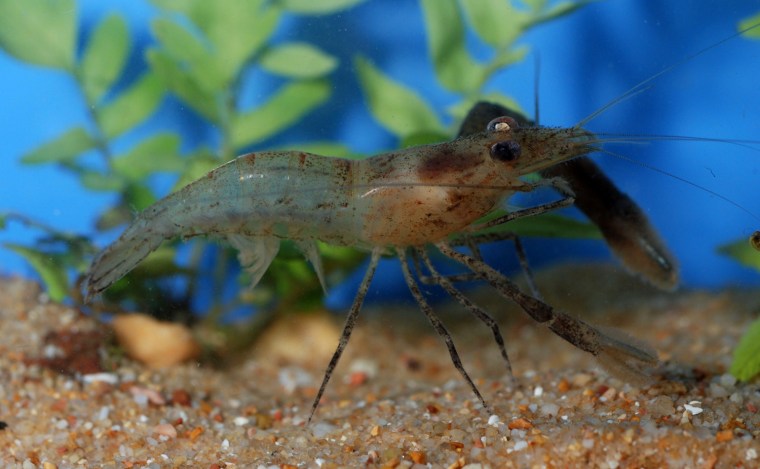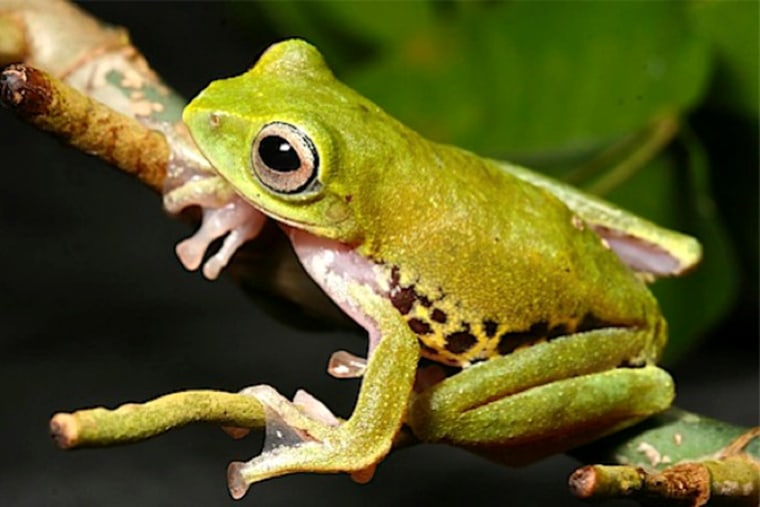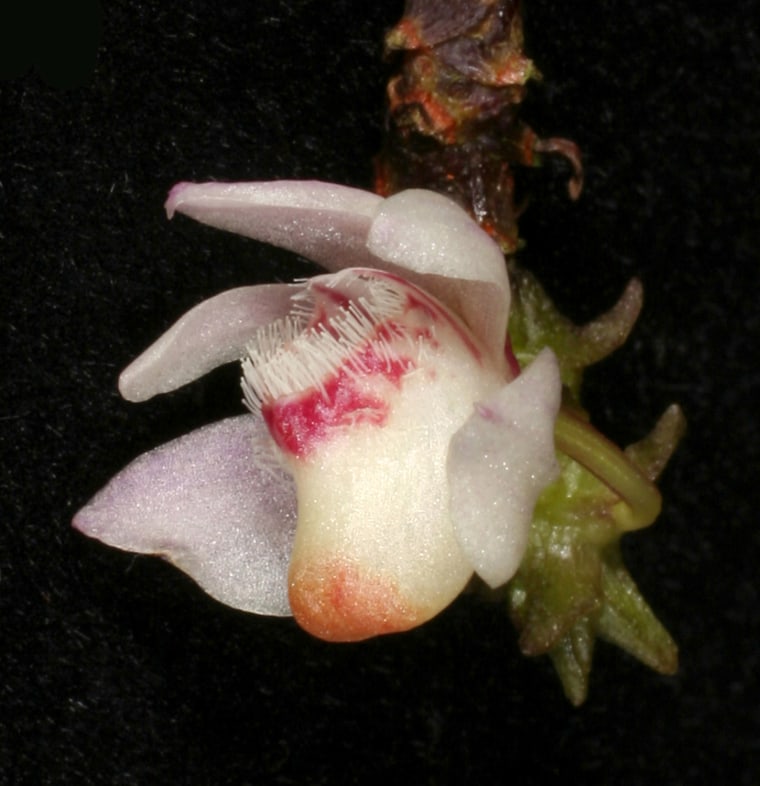
Science News
Treasures from the Heart of Borneo
See a flame-colored snake and other new species found in the Heart of Borneo conservation region.

A frog without lungs
A report from the environmental group WWF highlights 123 recently discovered species from an 85,000-square-mile conservation area known as the "Heart of Borneo." Scientists previously knew about this type of frog, Barbourula kalimantanensis, but in 2008 it was officially recognized as the world's first lungless frog. The endangered creatures breathe entirely through their skin. Without lungs, the frogs have a more aerodynamic shape that may help them maneuver more capably through the fast-flowing streams of Borneo's Kalimantan rainforest.

Flame-colored snake
Dendrelaphis haasi, or Kopstein's bronzeback, is a beautiful snake that can grow up to 5 feet (1.5 meters) long. This distinctive species, which was discovered in Borneo in 2007, has a bright, flame-like neck coloration that blends into an iridescent pattern of blue, green and brown. The snake may look attractive, but it has an aggressive disposition and a painful bite.




The slug that plays Cupid
Slugs are infrequently encountered in the Heart of Borneo, but several rare species exist at high altitudes - including this newly discovered green and yellow species, Ibycus rachelae. The slug has an unusually long tail that it can wrap around its body when resting. During courtship, the species shoots harpoon-like "love darts" at its prospective mate. The darts, made of calcium carbonate, are coated with a hormone that may help increase the chances of reproduction.


Color-changing frog
This flying frog can glide through the air, thanks to its large webbed feet and aerodynamic flaps of skin on the arms and legs. Borneo's Mulu flying frog, or Rhacophorus penanorum, is unusual in that the species has bright green skin at night but changes color to display a brown hue during the day.

Rare visitor
This attractive Spectacled Flowerpecker was discovered in the Heart of Borneo's Danum Valley Conservation Area in 2009. Scientists spotted the bird while they were walking along a canopied path. A research station has been in operation in Danum Valley since 1986, but this was the first time this particular species had been identified - and it hasn't been seen since. Scientists speculate that the bird rarely ventures beneath the forest canopy, which would explain why it was discovered only recently.
